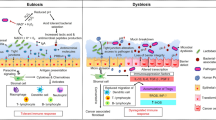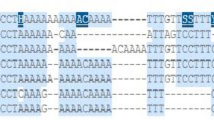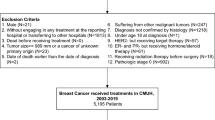Abstract
Few studies reported the implication of single nucleotide polymorphisms (SNPs) of monocyte chemoattractant protein 1 (MCP-1) and its receptor chemokine receptor 2 (CCR-2) in clinical significance of cancer of uterine cervix. We hypothesized that SNPs of MCP-1 and CCR-2 may affect the expression of these genes and then proteins. Therefore, we investigated the influence of the gene polymorphisms of MCP-1 and CCR-2 on the susceptibility and clinicopathologic characteristics of cervical neoplasia in Taiwan women. We recruited 86 patients with invasive cancer and 61 with high-grade dysplasia and 253 control women and selected 1 MCP-1 SNP rs1024611 (−2518G/A) and 1 CCR-2 SNP rs1799864 (190G/A; V64I) to determine their genotypes distribution using polymerase chain reaction-restriction fragment length polymorphism. In comparison to normal individuals with homozygotes GG in MCP-2 SNP, women with GA or AA carried a 2.01 odds ratio of developing cervical cancer. Nevertheless, it was not demonstrated in CCR-2 SNP. Furthermore, women with mutant homozygote (AA) of MCP-1 SNP increased the risk of deep stromal invasion, large tumor diameter, and parametrium invasion of cervical cancer, when compared to those with wild homozygote GG or heterozygote GA. However, women with mutant homozygotes (AA) of CCR-2 SNP did not increase the risk of poor clinicopathologic characteristics. In conclusion, MCP-1 SNP may be correlated with the development, deep stromal invasion, large tumor diameter, and parametrium invasion of cervical cancer but not with cancer recurrence or survival of Taiwan women patients with cancer. However, the SNP of its receptor, CCR-2, is not implicated in cervical cancer.
Similar content being viewed by others
References
Nasiell K, Roger V, Nasiell M. Behavior of mild cervical dysplasia during long term follow-up. Obstet Gynecol. 1986;67(5):665–669.
Petignat P, Roy M. Diagnosis and management of cervical cancer. Br Med J. 2007;335(7623):765–768.
Pinto AP, Crum CP. Natural history of cervical neoplasia: defining progression and its consequence. Clin Obstet Gynecol. 2000; 43(2):352–362.
Valente AJ, Graves DT, Vialle-Valentin CE, Delgado R, Schwartz CJ. Purification of a monocyte chemotactic factor secreted by nonhuman primate vascular cells in culture. Biochemistry. 1988;27(11):4162–4168.
Matsushima K, Larsen CG, DuBois GC, Oppenheim JJ. Purification and characterization of a novel monocyte chemotactic and activating factor produced by a human myelomonocytic cell line. J Exp Med. 1989;169(4):1485–1490.
Rovin BH, Lu L, Saxena R. A novel polymorphism in the MCP-1 gene regulatory region that influences MCP-1 expression. Biochem Biophys Res Commun. 1999;259(2):344–348.
Craig MJ, Loberg RD. CCL2 (monocyte chemoattractant protein-1) in cancer bone metastases. Cancer Metastasis Rev. 2006;25(4): 611–619.
Booth G, Newham P, Barlow R, Raines S, Zheng B, Han S. Gene expression profiles at different stages of collagen-induced arthritis. Autoimmunity. 2008;41(7):512–521.
Takahashi M, Galligan C, Tessarollo L, Yoshimura. Monocyte chemoattractant protein-1 (MCP-1), not MCP-3, is the primary chemokine required for monocyte recruitment in mouse peritonitis induced with thioglycollate or zymosan A. J Immunol. 2009; 183(5):3463–3471.
Charo IF, Taubman MB. Chemokines in the pathogenesis of vascular disease. Circ Res. 2004;95(9):858–866.
Riethdorf L, Riethdorf S, Gützlaff K, Prall F, Löning T. Differential expression of the monocyte chemoattractant protein-1 gene in human apillomavirus-16-infected squamous intraepithelial lesions and squamous cell carcinomas of the cervix uteri. Am J Pathol. 1996;149(5):1469–1476.
Arenberg DA, Keane MP, DiGiovine B, et al. Macrophage infiltration in human non-small-cell lung cancer: the role of CC chemokines. Cancer Immunol Immunother. 2000;49(2):63–70.
Ueno T, Toi M, Saji H, et al. Significance of macrophage chemoattractant protein-1 in macrophage recruitment, angiogenesis, and survival in human breast cancer. Clin Cancer Res. 2000; 6(8):3282–3289.
Smith MW, Carrington M, Winkler C, et al. CCR2 chemokine receptor and AIDS progression. Nat Med. 1997;3(10):1052–1053.
Kurihara T, Warr G, Loy J, Bravo R. Defects in macrophage recruitment and host defense in mice lacking the CCR2 chemokine receptor. J Exp Med. 1997;186(10):1757–1762.
MacKay CR. Chemokines: immunology’s high impact factors. Nat Immunol. 2001;2(2):95–101.
Negus RP, Stamp GW, Relf MG, et al. The detection and localization of monocyte chemoattractant protein-1 (MCP-1) in human ovarian cancer. J Clin Invest. 1995;95(5):2391–2396.
Valkovic T, Lucin K, Krstulja M, Dobi-Babic R, Jonjic N. Expression of monocyte chemotactic protein-1 in human invasive ductal breast cancer. Pathol Res Pract. 1998;194(5):335–340.
Liss C, Fekete MJ, Hasina R, Lam CD, Lingen MW. Paracrine angiogenic loop between head-and-neck squamous-cell carcinomas and macrophages. Int J Cancer. 2001;93(6):781–785.
Strauss L, Volland D, Guerrero A, Reichert T. Antiangiogenic and anti-immunosuppressive therapeutic strategies in human head and neck squamous cell carcinoma (HNSCC). Mund Kiefer Gesichtschir. 2005;9(5):273–281.
Kleine-Lowinski K, Gillitzer R, Kuhne-Heid R. Monocytechemo-attractant-protein-1 (MCP-1)-gene expression in cervical intra-epithelial neoplasias and cervical carcinomas. Int J Cancer. 1999;82(1):6–11.
Enjuanes A, Benavente Y, Bosch F, et al. Genetic variants in apoptosis and immunoregulation-related genes are associated with risk of chronic lymphocytic leukemia. Cancer Res. 2008; 68(24):10178–10186.
Vazquez-Lavista LG, Lima G, Gabilondo F, Llorente L. Genetic association of monocyte chemoattractant protein 1 (MCP-1)–2518 polymorphism in Mexican patients with transitional cell carcinoma of the bladder. Urology. 2009;74(2):414–418.
Chen MK, Yeh KT, Chiou HL, Lin CW, Chung TT, Yang SF. CCR2-64I gene polymorphism increase susceptibility to oral cancer. Oral Oncol. 2011;47(7):577–582.
Coelho A, Matos A, Catarino R, et al. Protective role of the polymorphism CCR2-64I in the progression from squamous intraepithelial lesions to invasive cervical carcinoma. Gynecol Oncol. 2005;96(3):760–764.
Ivansson EL, Gustavsson IM, Magnusson JJ, et al. Variants of chemokine receptor 2 and interleukin 4 receptor, but not interleukin 10 or Fas ligand, increase risk of cervical cancer. Int J Cancer. 2007;121(11):2451–2457.
Michiels K, Schutyser E, Conings R, et al. Carcinoma cell-derived chemokines and their presence in oral fluid. Eur J Oral Sci. 2009;117(4):362–368.
Koide N, Nishio A, Sato T, Sugiyama A, Miyagawa S. Significance of macrophage chemoattractant protein-1 expression and macrophage infiltration in squamous cell carcinoma of the esophagus. Am J Gastroenterol. 2004;99(9):1667–1674.
Marcus B, Arenberg D, Lee J, et al. Prognostic factors in oral cavity and oropharyngeal squamous cell carcinoma. Cancer. 2004; 101(12):2779–2787.
Strieter RM, Burdick MD, Gomperts BN, Belperio JA, Keane MP. CXC chemokines in angiogenesis. Cytokine Growth Factor Rev. 2005;16(6):593–609.
Coelho A, Matos A, Catarino R, et al. The influence of chemokine receptor CCR2 genotypes in the route to cervical carcinogenesis. Gynecol Obstet Invest. 2007;64(4):208–212.
Chatterjee K, Dandara C, Hoffman M, Williamson AL. CCR2-V64I polymorphism is associated with increased risk of cervical cancer but not with HPV infection or pre-cancerous lesions in African women. BMC Cancer. 2010;10:278.
Wong LM, Myers SJ, Tsou CL, Gosling J, Arai H, Charo IF. Organization and differential expression of the human monocyte chemoattractant protein 1 receptor gene. Evidence for the role of the carboxyl-terminal tail in receptor trafficking. J Biol Chem. 1997;272(2):1038–1045.
Kostrikis LG, Huang Y, Moore JP, et al. A chemokine receptor CCR2 allele delays HIV-1 disease progression and is associated with a CCR5 promoter mutation. Nat Med. 1998;4(3): 350–353.
Nakayama EE, Tanaka Y, Nagai Y, Iwamoto A, Shioda T. A CCR2–V64I polymorphism affects stability of CCR2A isoform. AIDS. 2004;18(5):729–738.
Sanders SK, Crean SM, Boxer PA, Kellner D, LaRosa GJ, Hunt SW 3rd. Functional differences between monocyte chemotactic protein-1 receptor A and monocyte chemotactic protein-1 receptor B expressed in a Jurkat T cell. J Immunol. 2000;165(9): 4877–4883.
Zheng B, Wiklund F, Gharizadeh B, et al. Genetic polymorphism of chemokine receptors CCR2 and CCR5 in Swedish cervical cancer patients. Anticancer Res. 2006;26(5B):3669–3674.
Gonzalez E, Rovin BH, Sen L, et al. HIV-1infection and AIDS dementia are influenced by a mutant MCP-1 allele linked to increased monocyte infiltration of tissues and MCP-1 levels. Proc Natl Acad Sci U S A. 2002;99(21):13795–13800.
Tse KP, Tsang NM, Chen KD, et al. MCP-1 promoter polymorphism at 2518 is associated with metastasis of nasopharyngeal carcinoma after treatment. Clin Cancer Res. 2007;13(21): 6320–6326.
Zhang J, Patel L, Pienta KJ. CC chemokine ligand 2 (CCL2) promotes prostate cancer tumorigenesis and metastasis. Cytokine Growth Factor Rev. 2010;21(1):41–48.
Vicari AP, Caux C. Chemokines in cancer. Cytokine Growth Factor Rev. 2002;13(2):143–154.
Tang CH, Tsai CC. CCL2 increases MMP-9 expression and cell motility in human chondrosarcoma cells via the Ras/Raf/MEK/ERK/NF-κB signaling pathway. Biochem Pharmacol. 2012; 83(3):335–344.
Hussain A, Harish G, Prabhu SA, et al. Inhibitory effect of genistein on the invasive potential of human cervical cancer cells via modulation of matrix metalloproteinase-9 and tissue inhibitors of matrix metalloproteinase-1 expression. Cancer Epidemiol. 2012;36(6):e387–e393.
Egeblad M, Werb Z. New functions for the matrix metalloproteinases in cancer progression. Nat Rev Cancer. 2002;2(3):161–174.
Scherer RL, McIntyre JO, Matrisian LM. Imaging matrix metalloproteinases in cancer. Cancer Metastasis Rev. 2008;27(4):679–690.
Chiu HY, Sun KH, Chen SY, et al. Autocrine CCL2 promotes cell migration and invasion via PKC activation and tyrosine phosphorylation of paxillin in bladder cancer cells. Cytokine. 2012;59(2): 423–432.
Tabara Y, Kohara K, Yamamoto Y, et al. Polymorphism of the monocyte chemoattractant protein (MCP-1) gene is associated with the plasma level of MCP-1 but not with carotid intima-media thickness. Hypertens Res. 2003;26(9):677–683.
Kucukgergin C, Isman FK, Cakmakoglu B, Sanli O, Seckin S. Association of polymorphisms in MCP-1, CCR2, and CCR5 genes with the risk and clinicopathological characteristics of prostate cancer. DNA Cell Biol. 2012;31(8):1418–1424.
Author information
Authors and Affiliations
Corresponding author
Rights and permissions
About this article
Cite this article
Wu, HH., Lee, TH., Tee, YT. et al. Relationships of Single Nucleotide Polymorphisms of Monocyte Chemoattractant Protein 1 and Chemokine Receptor 2 With Susceptibility and Clinicopathologic Characteristics of Neoplasia of Uterine Cervix in Taiwan Women. Reprod. Sci. 20, 1175–1183 (2013). https://doi.org/10.1177/1933719113477481
Published:
Issue Date:
DOI: https://doi.org/10.1177/1933719113477481




